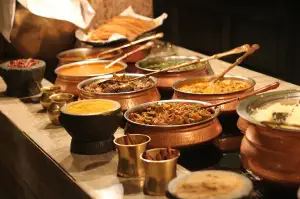Delicious Noodle Recipes to Satisfy Your Cravings

Noodles are a beloved staple in cuisines around the world, loved for their versatility and comforting appeal. These long, thin strips of dough can be made from wheat flour, rice flour, or buckwheat flour, offering a wide range of textures and flavors. Whether they are served in a steaming bowl of broth, tossed in a savory sauce, or stir-fried with colorful vegetables and proteins, noodles have a way of satisfying cravings and bringing people together around the dining table. Join us on a journey to explore the rich history, diverse types, and delicious recipes that celebrate the humble noodle.
History and Origins of Noodles
Noodles have a rich history dating back over 4,000 years to ancient China. It is believed that noodles were first made from millet in the Yellow River region. The earliest written record of noodles can be traced to a book from the Eastern Han Dynasty (25-220 AD). From China, noodles spread to other parts of Asia and eventually reached Europe through the Silk Road trade route. Marco Polo is often credited with introducing noodles to Italy during the 13th century, leading to the creation of iconic Italian pasta dishes like spaghetti and fettuccine. Today, noodles are enjoyed worldwide in various forms and have become an integral part of many cuisines.
Different Types of Noodles
When it comes to noodles, the variety is truly impressive. From the long and slender Italian spaghetti to the chewy Japanese udon, noodles come in all shapes and sizes to suit different dishes and palates. Some popular types include:
1. **Italian Pasta**: Spaghetti, fettuccine, penne, and ravioli.
2. **Asian Noodles**: Ramen (Japanese), soba (Japanese buckwheat noodles), udon (thick wheat noodles), rice vermicelli (common in Southeast Asia), and glass noodles (made from mung beans or sweet potato starch).
3. **Chinese Noodles**: Lo mein, chow mein, egg noodles, and hand-pulled noodles.
4. **Korean Noodles**: Japchae (sweet potato starch noodles) and naengmyeon (buckwheat noodles served in a cold broth).
5. **Thai Noodles**: Pad Thai (stir-fried rice noodles), pad see ew (wide rice noodles), and tom yum noodle soup.
Each type of noodle brings its own unique texture and flavor to a dish, making them versatile ingredients in various cuisines around the world.
Basic Ingredients for Making Noodles
The key ingredients for making noodles are simple and typically include flour, water, salt, and sometimes eggs. The type of flour used can vary, with all-purpose flour being a common choice for many noodle recipes. Water is essential to bind the ingredients together and create the dough. Salt is added for flavor enhancement, while eggs can be included to add richness and color to the noodles. Some variations may also incorporate other ingredients like oil or baking soda to achieve specific textures or flavors in the noodles.
Popular Noodle Dishes Around the World
Noodles are a beloved staple in many cultures, each with its own unique twist on this versatile ingredient. In Italy, pasta dishes like spaghetti carbonara and fettuccine alfredo reign supreme. Over in Japan, ramen noodles are a comfort food favorite, with varieties like shoyu (soy sauce-based) and tonkotsu (pork bone broth) being widely enjoyed. In Thailand, pad Thai is a well-known street food dish featuring stir-fried rice noodles with tofu, shrimp, peanuts, and lime. China boasts an array of noodle dishes such as lo mein and dan dan noodles that showcase the country's diverse culinary heritage. Whether you prefer slurping up pho in Vietnam or indulging in a hearty bowl of macaroni and cheese in the United States, there's a noodle dish for every palate around the globe.
Step-by-Step Guide to Making Homemade Noodles
1. **Ingredients**: To make homemade noodles, you will need all-purpose flour, eggs, salt, and water. The basic ratio is one egg for every 100 grams of flour.
2. **Mixing**: Create a well in the center of the flour and crack the eggs into it. Add a pinch of salt and gradually incorporate the flour into the eggs until a dough forms.
3. **Kneading**: Knead the dough on a floured surface for about 10-15 minutes until it becomes smooth and elastic.
4. **Resting**: Wrap the dough in plastic wrap and let it rest at room temperature for at least 30 minutes to relax the gluten.
5. **Rolling**: Divide the dough into smaller portions and roll each portion out thinly using a rolling pin or pasta machine.
6. **Cutting**: Once rolled out, cut the dough into your desired noodle shape – whether it's spaghetti, fettuccine, or any other type.
7. **Cooking**: Boil a pot of water with salt and cook the noodles for a few minutes until al dente. Fresh homemade noodles cook much faster than store-bought ones.
8. **Enjoy**: Serve your homemade noodles with your favorite sauce or broth, and savor the delicious taste of freshly made pasta that you created with your own hands!
Tips for Cooking and Serving Noodles
When cooking noodles, it's essential to follow the package instructions for the specific type you're using. Remember to salt the water generously before adding the noodles to enhance their flavor. To prevent sticking, stir the noodles occasionally during cooking. Once cooked, rinse them under cold water to stop the cooking process and remove excess starch.
For serving, consider pairing noodles with complementary sauces or toppings that enhance their taste. Garnish with fresh herbs like cilantro or basil for a burst of freshness. To add texture, try sprinkling toasted sesame seeds or crushed peanuts on top. Serve hot dishes immediately to enjoy them at their best, while cold noodle salads can benefit from some time in the fridge to allow flavors to meld together.
Health Benefits of Noodles
Noodles, when consumed in moderation and as part of a balanced diet, can offer several health benefits. They are a good source of carbohydrates, which provide essential energy for the body. Noodles made from whole grains contain fiber, aiding digestion and promoting gut health. Additionally, noodles can be a vehicle for incorporating vegetables, lean proteins, and healthy fats into your meals. Opting for whole wheat or buckwheat noodles can also increase the intake of vitamins and minerals like B vitamins and iron. Remember to pair your noodles with nutrient-rich ingredients to maximize their health benefits.
In conclusion, noodles are a versatile and beloved staple in many cultures around the world. Their history dates back thousands of years, and they come in various shapes, sizes, and flavors to suit every palate. Whether you prefer Italian pasta dishes, Japanese ramen, or Chinese stir-fried noodles, there is a noodle dish for everyone to enjoy. We invite you to explore the world of noodles by trying out different recipes and experimenting with homemade versions. Embrace the comfort and satisfaction that a delicious bowl of noodles can bring to your table. Join us in celebrating the joy of food through these delightful noodle recipes!
Published: 30. 03. 2024
Category: Recipes



